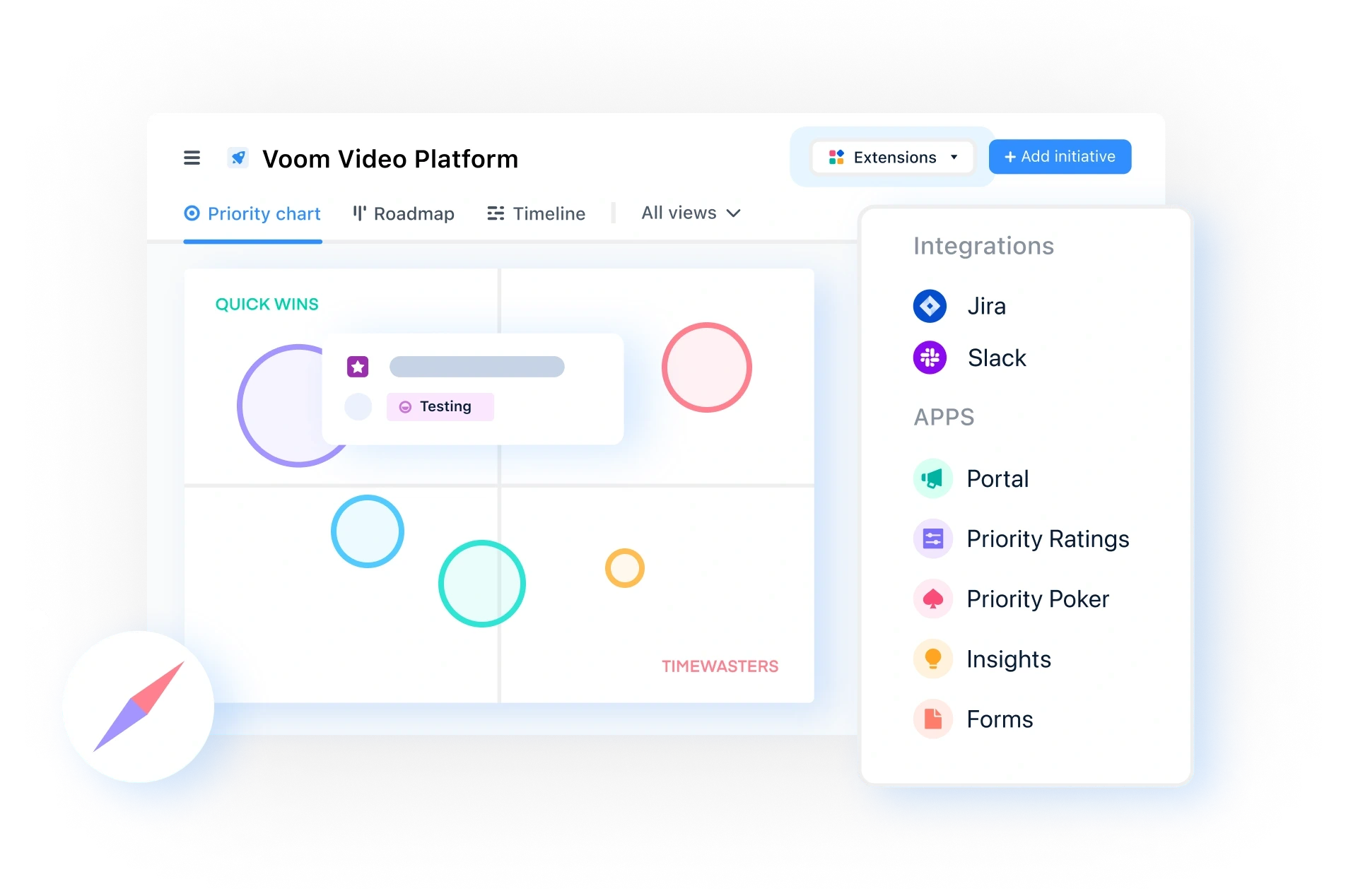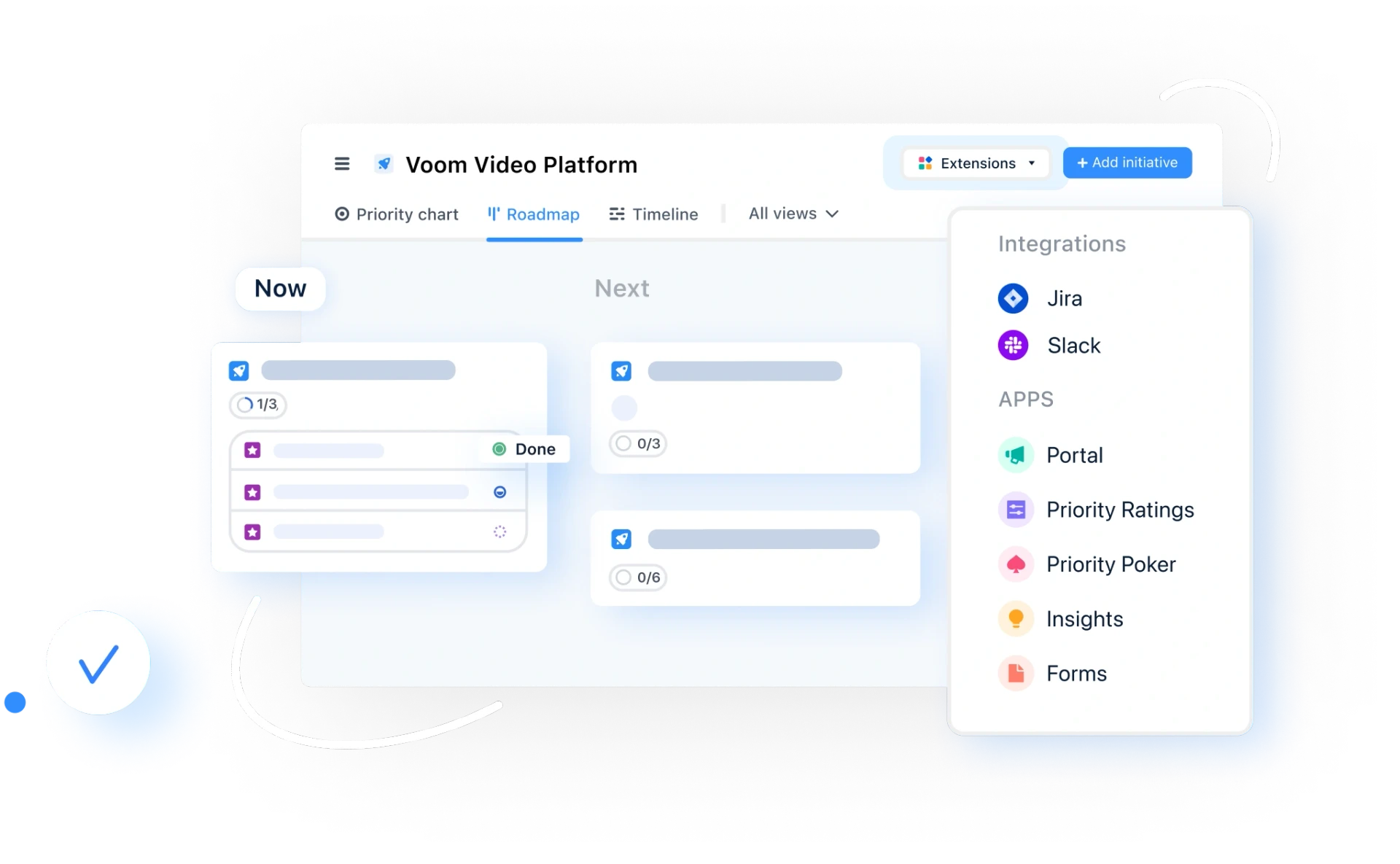Why product teams fall behind (and how prioritization software can help)

Why product teams fall behind (and how prioritization software can help)
Great product teams aren’t short on ideas. What slows them down — or sends them in the wrong direction — is poor prioritization.
In fast-moving markets, the ability to make clear, strategic decisions about what to build (and when) is a key differentiator. But without a structured prioritization process, teams risk chasing trends, shipping low-impact features, or sticking to outdated roadmaps that no longer align with customer needs or business goals.
This is where product prioritization software proves its worth. By offering a clearer picture of task impact, dependencies, and customer value, it helps teams avoid the most common pitfalls that drain resources and delay progress. Below, we explore some of these common mistakes — and how the right product prioritization tool can help you avoid them.
Focusing on low-priority tasks
One of the most common mistakes product teams make is focusing on small tasks first. While it may be easier to get the small tasks out of the way early, it can give a false sense of progress. You may have completed more of the smaller tasks, but the magnitude of larger tasks may outweigh what has already been done, making it difficult to judge completion timeframes. This also ignores dependencies, which may cause significant problems as the project progresses.
When teams prioritize features without fully understanding how they'll affect other systems or processes, it can create delays or bottlenecks as teams have to backtrack and make adjustments.
Product prioritization software help teams understand the magnitude of all tasks to ensure the most important—not the fastest — tasks are completed first. It also ensures dependencies are visible throughout the process so nothing is forgotten.
Focusing on unnecessary and trending features
One classic issue that often pops up is “shiny object syndrome,” when product teams get excited about new and trending features without considering whether they really align with broader business goals.
While it may seem important to chase these trends, focusing on them may result in core functionality being neglected. There’s no use having cool, shiny features if users can’t perform basic tasks.
Focusing on old or outdated priorities
Product priorities can shift quickly, even during the development phase. This is something product teams need to be aware of and plan for, as sticking to an old roadmap or outdated priorities can slow progress.
Failing to update priorities may also affect the impact of your launch by making the product less relevant in a fast-moving market. This also ties into backlog management, which needs to be assessed and updated regularly. Teams need to clear backlogs full of low-priority or redundant tasks, which can overwhelm the team and stall progress.
Forgetting about the customer
It’s also important for product managers to keep the customer in mind during prioritization to ensure real value is built into the product.
Combining customer centricity with data-driven prioritization decisions ensures projects run smoothly, on time, and on budget while delivering value. This is where product prioritization software comes in handy, as it helps product managers focus on data and research rather than feelings.
Emma-Lily Pendleton

Read also



Prioritize with confidence

Experience the new way of doing product management



